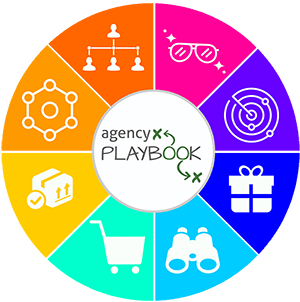How to Make Sure Your Agency Merger is Successful
Are you having trouble scaling your agency? Considering a merger as a growth plan? Have you been approached about merging with another agency? A merger can be a great way to scale up faster by adding a new, complimentary service or a bigger piece of the niche. On the other hand, agency mergers are just as risky as starting the business the first time. If you’re considering a merger, there are ways to ensure it is successful.
In this episode, we’ll cover:
- Three plans you need to make your agency merger successful.
- Why your some team members might not follow your agency merger.
- Creating team trust through vulnerability.
I talked to Lisa Vielee, who merged her small, 4-person team with a larger full-service agency 15 years ago. Initially, she was seeking a mentor to learn how to scale. He agreed, but also asked her to consider merging the agencies and succeeding him when he retired. The two now have a team of 30 people, and Lisa is President of Well Done Marketing. She is here to explain how the agency has thrived since the merger.
Three Plans You Need to Make When Merging
Lisa agreed to merge her agency with Well Done Marketing because she had reached the point with her four-person team where she either needed to let them go and return to freelancing or scale into something bigger. She chose a mentor who had successfully grown his own full-service agency. Instead, the two decided to merge agencies. This isn’t a simple process, however. It involved developing plans and getting on the same page in three different areas:
- The 5 to 8-year plan: It is one thing to combine two teams into one. It’s another thing figuring out how to move the newly created team forward. You need to find a way to retain their unique connections with clients and provide a greater number of services for all clients involved.
- The divorce plan: Just as in marriage, most people don’t want to think about their brand new merger not working out. However, businesses that merge sometimes fail for any number of reasons. Developing a plan for how to “unmerge” – a sort of prenuptial agreement – is as important as the merger itself.
- The team plan: One of the mistakes Lisa made in planning a merger was failing to let their teams completely experience all the emotions. Emotions over a merger can range from anxiety about working with new people to sadness over change.
Why Some Team Members Might Not Follow Your Agency Merger
One of the scary things involved in a merger is the notion that your existing team may not agree with the new direction. Part of Lisa’s own growth was learning the importance of giving her team the information they need and letting them decide to stay or not.
When Lisa’s agency merged with Well Done, she did lose some team members. However, because she was able to realize they had a responsibility to choose their own career path, she continues to partner with those former employees on projects. Lisa turns to them when she needs freelance work and has the opportunity to see them continue to grow and contribute to the creative community.
Creating Team Trust Through Vulnerability
But wait, the work isn’t finished once the merger itself is complete and the teams are working together. Lisa explains you must create cohesion and a unified vision for the team. A few years ago, some young team members requested to add empathy to the team’s culture. However, what Lisa realized, was in order to receive empathy, they needed to first become vulnerable to one another.
Vulnerability, she says, is the act of letting go of control of the outcome and trusting others in their role. It involves talking to people, not just about the work but about outside things that impact their work. This was something she learned as President of the merged agency — a role that allows her to step back, view how the agency is functioning, and create a culture without micromanaging the work being done by the team.
Would you like a 90% close rate on the deals you want?
It took my agency years to develop a solid foot in the door offer that converted at a high rate. And, Ian has spent the last 10 years developing his too. That’s why we decided to collaborate and create the FITD framework to share with other agency owners.
If you want to learn more check out FootInTheDoor.com. You can discover the exact framework that Ian and I created so you can be successful. Close deals faster, stop giving away strategy for free and win the deals you want. When you have the right framework, you will find your sales process is scalable. You can even step away from sales and so you can spend your time working on the best.

